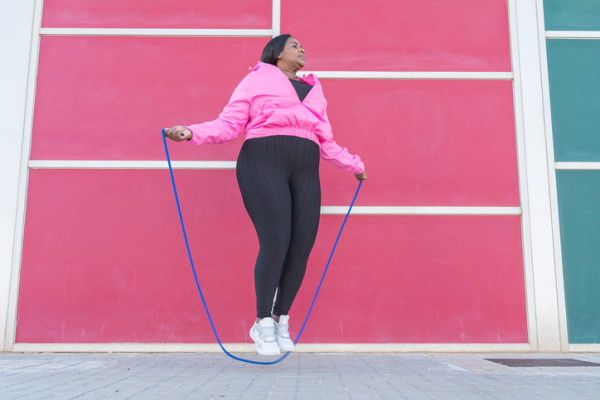
New research shows little risk of infection from prostate biopsies

Infections after a prostate biopsy are rare, but they do occur. Now research shows that fewer than 2% of men develop confirmed infections after prostate biopsy, regardless of the technique used.
In the United States, doctors usually thread a biopsy needle through the rectum and then into the prostate gland while watching their progress on an ultrasound machine. This is called a transrectal ultrasound-guided biopsy (TRUS). Since the biopsy needle passes through the rectum, there's a chance that fecal bacteria will be introduced into the prostate or escape into the bloodstream. For that reason, doctors typically treat a patient with antibiotics before initiating the procedure.
Alternatively, the biopsy needle can be passed through the peritoneum, which is a patch of skin between the anus and the base of the scrotum. These transperitoneal prostate (TP) biopsies, as they are called, are also performed with ultrasound guidance, and since they bypass the rectum, antibiotics typically aren't required. In that way, TP biopsies help to keep antibiotic resistance at bay, and European medical guidelines strongly favor this approach, citing a lower risk of infection.
Study goals and methodology
TP biopsies aren't widely adopted in the United States, in part because doctors lack familiarity with the method and need further training to perform it. The technology is steadily improving, and TP biopsies are increasingly being conducted in office settings around the country. But questions remain about how TRUS and TP biopsies compare in terms of their infectious complications.
To investigate, researchers at Albany Medical Center in New York conducted the first-ever randomized clinical trial comparing infection risks associated with either method. The results were published in February in the Journal of Urology.
The Albany team randomized 718 men to either a TRUS or TP biopsy. Nearly all the men who got a TRUS biopsy (and with few exceptions, none of the TP-treated men) first received a single-day course of antibiotics. All the biopsies were administered between 2019 and 2022 by three urologists working at the Medical Center's affiliated and nonaffiliated hospitals.
The men were then monitored for fever, genitourinary infections, antibiotic prescriptions for suspected or confirmed infections, sepsis, and infection-related contacts with caregivers. Researchers collected data during a visit conducted two weeks after a biopsy procedure, and then by phone over an additional 30-day period following this initial meeting.
What the researchers found
According to the results, 1.1% of men in the TRUS group and 1.4% of men in the transperineal group wound up with confirmed infections. The difference was not statistically significant. If "possible" infections were counted (for example, antibiotic prescriptions for fever), then the rates increased to 2.6% and 2.7% of men in the TRUS and TP groups, respectively.
Fever was the most frequent complication, reported by six participants in each group. One participant from each group also developed noninfectious urinary retention, requiring the temporary use of a catheter. None of the men developed sepsis or required post-biopsy treatments for bleeding.
The study had some limitations: Nearly all the participants were white, and so the results may not be applicable to men from other racial and ethnic groups. Furthermore, since all the men were biopsied by a single institution, it's unclear if the findings are generalizable in other settings. Still, the study provides reassuring evidence that both types of biopsies "appear safe and viable options for clinical practice," the authors concluded.
Commentary from experts
"The paper provides needed evidence that TP biopsies without antibiotics are about as safe and efficacious as TRUS biopsies with antibiotics," said Dr. Marc Garnick, the Gorman Brothers Professor of Medicine at Harvard Medical School and Beth Israel Deaconess Medical Center. The findings also help to dispel a growing view that transperineal biopsies are superior, Dr. Garnick pointed out.
"Recent years have witnessed a marked interest and surge in the transperineal approach, primarily driven by early studies suggesting a lower risk of infectious complications compared with transrectal biopsy," said Dr. Boris Gershman, a urologist at Harvard-affiliated Beth Israel Deaconess Medical Center in Boston, and a member of Harvard Health Publishing's Annual Report on Prostate Diseases advisory board.
"Interestingly, the investigators find no difference in infectious complications, and it will be important to see if other ongoing studies report similar results," Dr. Gershman continued. "In addition to safety, we also need to confirm whether there are any meaningful differences between the two approaches with respect to cancer detection rates."
About the Author

Charlie Schmidt, Editor, Harvard Medical School Annual Report on Prostate Diseases
Charlie Schmidt is an award-winning freelance science writer based in Portland, Maine. In addition to writing for Harvard Health Publishing, Charlie has written for Science magazine, the Journal of the National Cancer Institute, Environmental Health Perspectives, … See Full Bio View all posts by Charlie Schmidt
About the Reviewer

Marc B. Garnick, MD, Editor in Chief, Harvard Medical School Annual Report on Prostate Diseases; Editorial Advisory Board Member, Harvard Health Publishing
Dr. Marc B. Garnick is an internationally renowned expert in medical oncology and urologic cancer. A clinical professor of medicine at Harvard Medical School, he also maintains an active clinical practice at Beth Israel Deaconess Medical … See Full Bio View all posts by Marc B. Garnick, MD

Plyometrics: Three explosive exercises even beginners can try

As a kid, I spent many Saturdays romping around my Florida neighborhood imitating Colonel Steve Austin, better known as The Six Million Dollar Man to avid TV watchers in the 1970s.
The popular show featured a bionic man — half human and half machine — who could jump from three-story buildings, leap over six-foot-high walls, and bolt into a full 60-mile-per-hour sprint. Naturally, these actions occurred in slow motion with an iconic vibrating electronic sound effect.
My own bionic moves involved jumping to pluck oranges from tree branches, hopping over anthills, and leaping across narrow ditches while humming that distinctive sound. I didn’t realize it, but this imitation game taught me the foundations of plyometrics — the popular training routine now used by top athletes to boost strength, power, and agility.
What are plyometrics?
Plyometric training involves short, intense bursts of activity that target fast-twitch muscle fibers in the lower body. These fibers help generate explosive power that increases speed and jumping height.
“Plyometrics are used by competitive athletes who rely on quick, powerful movements, like those in basketball, volleyball, baseball, tennis, and track and field,” says Thomas Newman, lead performance specialist with Harvard-affiliated Mass General Brigham Center for Sports Performance and Research. Plyometrics also can help improve coordination, agility, and flexibility, and offer an excellent heart-pumping workout.
Who can safely try plyometrics?
There are many kinds of plyometric exercises. Most people are familiar with gym plyometrics where people jump onto the top of boxes or over hurdles.
But these are advanced moves and should only be attempted with the assistance of a trainer once you have developed some skills and muscle strength.
Keep in mind that even the beginner plyometrics described in this post can be challenging. If you have had any joint issues, especially in your knees, back, or hips, or any trouble with balance, check with your doctor before doing any plyometric training.
How to maximize effort while minimizing risk of injury
- Choose a surface with some give. A thick, firm mat (not a thin yoga mat); well-padded, carpeted wood floor; or grass or dirt outside are good choices that absorb some of the impact as you land. Do not jump on tile, concrete, or asphalt surfaces.
- Aim for just a few inches off the floor to start. The higher you jump, the greater your impact on landing.
- Bend your legs when you land. Don’t lock your knees.
- Land softly, and avoid landing only on your heels or the balls of your feet.
Three simple plyometric exercises
Here are three beginner-level exercises to jump-start your plyometric training. (Humming the bionic man sound is optional.)
Side jumps
Stand tall with your feet together. Shift your weight onto your right foot and leap as far as possible to your left, landing with your left foot followed by your right one. Repeat, hopping to your right. That’s one rep.
- You can hold your arms in front of you or let them swing naturally.
- Try not to hunch or round your shoulders forward as you jump.
- To make this exercise easier, hop a shorter distance to the side and stay closer to the floor.
Do five to 15 reps to complete one set. Do one to three sets, resting between each set.
Jump rope
Jumping rope is an effective plyometric exercise because it emphasizes short, quick ground contact time. It also measures coordination and repeated jump height as you clear the rope.
- Begin with two minutes of jumping rope, then increase the time or add extra sets.
- Break it up into 10- to 30-second segments if two minutes is too difficult.
- If your feet get tangled, pause until you regain your balance and then continue.
An easier option is to go through the motions of jumping rope but without the rope.
Forward hops
Stand tall with your feet together. Bend your knees and jump forward one to two feet. Turn your body around and jump back to the starting position to complete one rep.
- Let your arms swing naturally during the hop.
- To make this exercise easier, hop a shorter distance and stay closer to the floor.
- If you want more of a challenge, hop farther and higher. As this becomes easier to do, try hopping over small hurdles. Begin with something like a stick and then increase the height, such as with books of various thicknesses.
Do five to 10 hops to complete one set. Do one to three sets, resting between each set.
About the Author

Matthew Solan, Executive Editor, Harvard Men's Health Watch
Matthew Solan is the executive editor of Harvard Men’s Health Watch. He previously served as executive editor for UCLA Health’s Healthy Years and as a contributor to Duke Medicine’s Health News and Weill Cornell Medical College’s … See Full Bio View all posts by Matthew Solan
About the Reviewer

Howard E. LeWine, MD, Chief Medical Editor, Harvard Health Publishing
Dr. Howard LeWine is a practicing internist at Brigham and Women’s Hospital in Boston, Chief Medical Editor at Harvard Health Publishing, and editor in chief of Harvard Men’s Health Watch. See Full Bio View all posts by Howard E. LeWine, MD